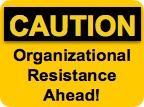The one question you should ask yourself when thinking about your data.

An ex-colleague, Andrew Hombach, asked a fabulous question that I thought I would share with you. Andrew and I worked together at Ironside, a data and analytics consulting firm in Lexington, MA, and he now works as a Customer Success Engineer at Databricks. Smart individual, as you will note below.
We were working on a thought leadership article on Data & Analytics Strategy and we were trying to think of simple ways to articulate the challenge that executives face in the complex world of data and analytics. Here is the question he said we should ask.
“If you found a problem with your data, who would you go to to have it fixed?”
It’s the kind of question that makes me wish we were still working together. Simple, insightful, and yet challenges us to think through and acknowledge how complex our business or functional areas really are.
This was frequently validated when we asked executives and leaders the question. What I have found, is that the question, and not necessarily the answer, leads to a great discussion on issues such as data governance, data security, and reporting often resulting in actions that make progress along a data and analytics journey.
While the most common answer seems to be “I haven’t a clue, we have [insert name] who takes care of those things”, I have been impressed more recently in talking with a few data driven executives who know exactly what they would do. They break the mold and are learning to live by the data as a way to inform their intuition.
For illustration purposes let’s walk through an example. We could use any data set you chose; product, supplier, customer, employee, financial, etc. We’ll use customer data because it’s easy to follow.
You may have more than one record for a customer, each may be incomplete or incorrect. For example, a customer moves house and you don’t have their correct address, or changes a phone number, has different spellings of his or her name (first and/or last), different credit terms, billing address, shipping address, etc. There are plenty of ways in which the data could be inaccurate and/or duplicative.
If the data is inaccurate, it more often than not leads to poor customer experience at any or many points along the customer experience life cycle. The cost of poor customer experience could be the loss of a customer, reduced repeat business, and/or lower social media ratings. Furthermore, it impacts your operational metrics; everything from length and number of calls to undelivered product and there’s no way of knowing how frequently issues really occur, unless you track customer incident rates.
The simplicity of the question isn’t about the 99% of the time that you get it right. It’s about the exceptions and it asks you to think about the policy, procedures, and processes you have in place to fix the exceptions. Most organizations don’t rely on standard procedures to identify, decide, and solve, for data inconsistencies. They tend to be more ad hoc and rely on the first line of customer service channels to identify and fix any data issues.
We’d love to hear from you.
How would you answer Andrew’s question? What follow up questions would ask?
Take a few minutes to consider it and maybe ask this question in your next data governance meeting. It will be interesting to hear your team’s answers and observations.
For the courageous, let us know your responses and we would be more than happy to act as a sounding board for your reflections.





